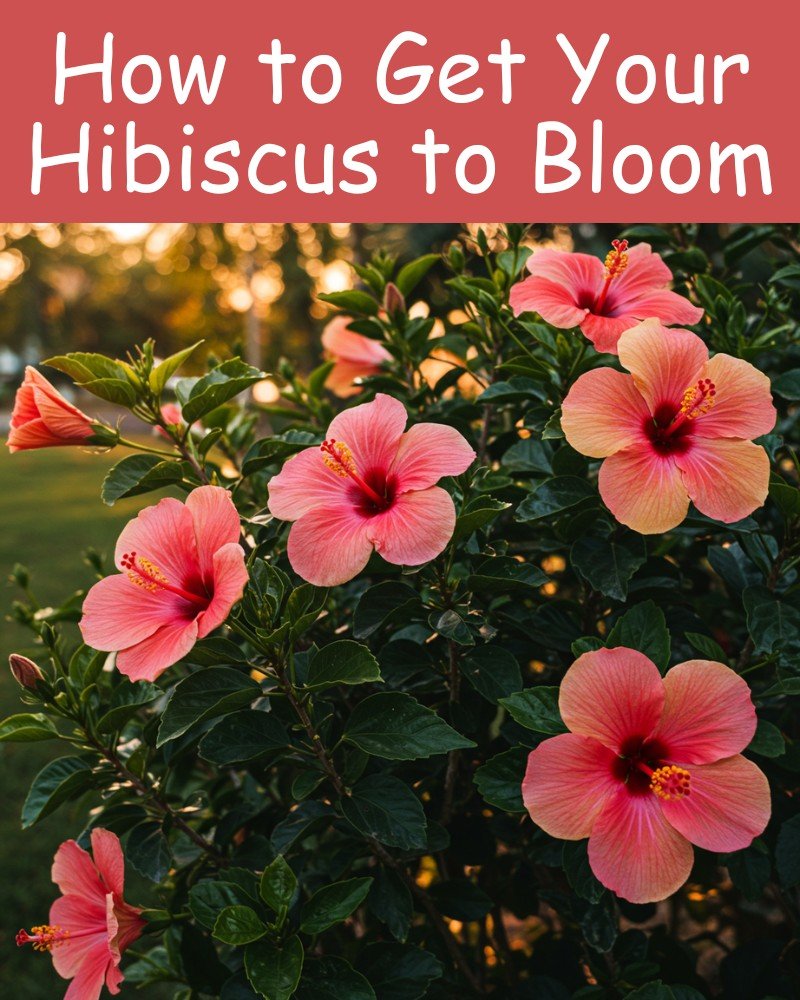Hibiscus plants are renowned for their stunning, vibrant blooms that can transform any garden into a tropical paradise. However, getting your hibiscus to bloom can sometimes be a challenge, especially if you’re new to gardening or if your plant isn’t thriving as expected. In this article, we’ll explore the essential steps and tips to help you get your hibiscus to bloom beautifully and consistently.
Understanding Hibiscus Plants
Before diving into the specifics of how to get your hibiscus to bloom, it’s important to understand the plant itself. Hibiscus is a genus of flowering plants in the mallow family, Malvaceae. There are hundreds of species, but the most commonly grown are Hibiscus rosa-sinensis (tropical hibiscus) and Hibiscus syriacus (hardy hibiscus).
Tropical Hibiscus vs. Hardy Hibiscus
- Tropical Hibiscus (Hibiscus rosa-sinensis): These are evergreen shrubs that thrive in warm climates and are often grown in containers in cooler regions. They produce large, colorful flowers and require consistent care to bloom.
- Hardy Hibiscus (Hibiscus syriacus): Also known as Rose of Sharon, these are deciduous shrubs that can withstand colder temperatures. They bloom later in the season and are generally easier to care for than tropical varieties.
Essential Factors for Hibiscus Blooming
To get your hibiscus to bloom, you need to provide the right conditions and care. Here are the key factors to consider:
1. Light Requirements
Hibiscus plants are sun-loving and require plenty of light to produce blooms. However, the amount of light needed can vary depending on the species.
- Tropical Hibiscus: These plants need at least 6 hours of direct sunlight daily. In extremely hot climates, they may benefit from some afternoon shade to prevent scorching.
- Hardy Hibiscus: These plants also thrive in full sun but can tolerate partial shade. However, too much shade can reduce blooming.
Tip: If your hibiscus isn’t blooming, consider moving it to a sunnier location or supplementing with grow lights if grown indoors.
2. Watering Practices
Proper watering is crucial for hibiscus plants. Both overwatering and underwatering can stress the plant and inhibit blooming.
- Tropical Hibiscus: These plants prefer consistently moist soil but not waterlogged. Water deeply when the top inch of soil feels dry, and ensure good drainage to prevent root rot.
- Hardy Hibiscus: These plants are more drought-tolerant once established but still require regular watering during dry spells.
Tip: Use a moisture meter to monitor soil moisture levels and adjust your watering schedule accordingly.
3. Soil Quality and pH
Hibiscus plants thrive in well-draining, fertile soil with a slightly acidic to neutral pH (6.0 to 7.0).
- Soil Type: A mix of potting soil, perlite, and organic compost works well for container-grown hibiscus. For garden beds, amend the soil with compost to improve fertility and drainage.
- pH Level: Test your soil’s pH and adjust it if necessary. You can lower the pH by adding sulfur or raise it with lime.
Tip: Mulching around the base of the plant can help retain moisture and regulate soil temperature.
4. Fertilization
Hibiscus plants are heavy feeders and require regular fertilization to support blooming.
- Fertilizer Type: Use a balanced, water-soluble fertilizer with a ratio like 10-10-10 or one specifically formulated for hibiscus. Look for fertilizers that contain micronutrients like iron and magnesium.
- Fertilization Schedule: Feed your hibiscus every 2-4 weeks during the growing season (spring and summer). Reduce fertilization in the fall and stop during the winter when the plant is dormant.
Tip: Over-fertilizing can lead to excessive foliage growth at the expense of blooms. Follow the manufacturer’s instructions and avoid overfeeding.
5. Pruning and Deadheading
Regular pruning and deadheading can encourage your hibiscus to produce more blooms.
- Pruning: Prune your hibiscus in early spring to remove dead or diseased branches and shape the plant. This encourages new growth and more flowering.
- Deadheading: Remove spent blooms regularly to redirect the plant’s energy into producing new flowers rather than seed production.
Tip: Use clean, sharp pruning shears to make clean cuts and reduce the risk of disease.
6. Temperature and Humidity
Hibiscus plants are sensitive to temperature fluctuations and prefer warm, humid conditions.
- Tropical Hibiscus: These plants thrive in temperatures between 60°F and 90°F (15°C to 32°C). They are not frost-tolerant and should be brought indoors or protected during cold weather.
- Hardy Hibiscus: These plants can tolerate colder temperatures but still prefer warm conditions. They may die back in winter but will regrow in spring.
Tip: If you’re growing hibiscus indoors, maintain a consistent temperature and consider using a humidifier to increase humidity levels.
7. Pest and Disease Management
Pests and diseases can stress your hibiscus and reduce blooming. Common issues include aphids, spider mites, whiteflies, and fungal diseases.
- Prevention: Keep your hibiscus healthy by providing proper care and monitoring for signs of pests or disease.
- Treatment: If you notice pests, treat the plant with insecticidal soap or neem oil. For fungal issues, remove affected leaves and apply a fungicide if necessary.
Tip: Regularly inspect your hibiscus for signs of trouble and address issues promptly to prevent them from spreading.
Troubleshooting Common Hibiscus Blooming Problems
Even with the best care, hibiscus plants can sometimes struggle to bloom. Here are some common issues and how to address them:
1. No Blooms or Few Blooms
- Cause: Insufficient light, improper watering, or lack of nutrients.
- Solution: Ensure your hibiscus is getting enough sunlight, water consistently, and fertilize regularly.
2. Bud Drop
- Cause: Stress from temperature fluctuations, overwatering, or underwatering.
- Solution: Maintain consistent watering practices and protect the plant from extreme temperature changes.
3. Yellow Leaves
- Cause: Overwatering, nutrient deficiencies, or pests.
- Solution: Check soil moisture, adjust watering, and fertilize as needed. Inspect for pests and treat if necessary.
4. Leggy Growth
- Cause: Insufficient light or lack of pruning.
- Solution: Move the plant to a sunnier location and prune to encourage bushier growth.
Conclusion
Getting your hibiscus to bloom requires a combination of proper care, attention to detail, and a bit of patience. By providing the right light, water, soil, and nutrients, along with regular pruning and pest management, you can encourage your hibiscus to produce those stunning, vibrant blooms that make it such a beloved plant.
Remember that each hibiscus plant is unique, and it may take some time to figure out the perfect care routine for your specific plant. With consistent care and a little experimentation, you’ll be rewarded with a flourishing hibiscus that blooms abundantly, adding a touch of tropical beauty to your garden or home.



